- Hole APC-53 was drilled from Pad 10 with the aim of stepping out to the northeast at depth along the recently discovered high-grade Contact Zone in the Apollo system. Prior to intercepting the Contact Zone downhole, a new bulk tonnage high-grade, sheeted, precious metal vein system was discovered beginning directly from surface with results as follows:
- 145.0 metres @ 2.11 g/t gold equivalent from surface.
- This new bulk tonnage and high-grade discovery remains open in all directions and will likely follow a northwest-southeast corridor. A follow up hole to this new discovery, APC-63, is currently underway.
- Further along drill hole APC-53, the Contact Zone was intersected as planned. A remarkably continuous long zone of high-grade gold-silver-copper mineralization was cut in the hole and included a very high-grade section with assay results below:
- 329.75 metres @ 3.10 g/t gold equivalent from 232.95 metres downhole including;
- 56.60 metres @ 10.05 g/t gold equivalent from 277.65 metres downhole.
- The Contact Zone along the southeastern edge of the system has now been extended to 370 metres (previously 150 metres) and remains open to the northeast for further expansion. Additional drill holes testing the Contact Zone have been completed with assay results expected in July 2023. Furthermore, hole APC-53, has increased the overall dimensions of the Apollo porphyry system to the northeast (see Figure 1).
- Three additional drill holes intercepted high-grade gold-silver-copper mineralization. Holes APC-50 through APC-52 confirm that shallow high-grade mineralization begins at or near surface from drill Pads 9 and 10. Furthermore, all three holes added volume to the block model at shallow elevations where no prior drilling had taken place with assay results as follows:
- 137.70 metres @ 2.60 g/t gold equivalent from 53.30 metres downhole (consisting of 0.74 g/t gold, 52 g/t silver and 0.66% copper) in APC-50 from Pad 9.
- 112.55 metres @ 2.26 g/t gold equivalent from 163.30 metres downhole (consisting of 1.27 g/t gold, 22 g/t silver and 0.41% copper) in APC-51 from Pad 9.
- 190.30 metres @ 2.46 g/t gold equivalent from 1.9 metres downhole (consisting of 1.19 g/t gold, 43 g/t silver and 0.41% copper) in APC-52 from Pad 10.
- Seven additional holes have been completed with assay results expected in the near term. All seven holes intersected cumulative mineralization over varying yet significant downhole drill lengths. Three drill rigs are operating on site with a fourth rig expected to begin operating prior to the end of Q2, 2023. Once on site, the fourth rig will focus on testing the six new exploration targets directly surrounding the Apollo system as well as regional targets within the three-kilometre porphyry corridor (see press release dated April 18, 2023, for further details).
Ari Sussman, Executive Chairman commented: “Hole APC-53 is very significant for the Company. Firstly, we have discovered a high-grade and bulk tonnage sheeted vein system located above the Apollo porphyry system. The vein system has potential to be traced over significant distances to both the northwest and to the southeast and if drilling corroborates this potential, the overall footprint of the shallow mineralization at Apollo would expand significantly. Follow up drilling is underway from Pad 10 with hole APC-63 stepping out at a shallow angle further to the northeast.
“Secondly, the thick intercept in APC-53 testing the contact zone cut remarkably high grades and displayed excellent continuity over a long interval. This interval is the second highest grade intercept (grams x metres) ever drilled at the project and has more than doubled the known strike length of the high-grade Contact Zone.
“With drilling now fully transitioned into expansion mode for the Apollo porphyry system and the testing of newly generated targets, we are truly excited to see what other potential may lie ahead.”
Toronto, Ontario, June 13, 2023 - Collective Mining Ltd. (TSXV: CNL, OTCQX: CNLMF) (“Collective” or the “Company”) is pleased to announce assay results for the first four holes drilled from newly constructed Pads 9 and 10 within the Apollo porphyry system (“Apollo”) at the Guayabales project located in Caldas, Colombia. Apollo is a high-grade, bulk tonnage copper-silver-gold system, which owes its excellent metal endowment to an older copper-silver and gold porphyry system being overprinted by younger precious metal rich, carbonate base metal vein systems (intermediate sulphidation porphyry veins) within a magmatic, hydrothermal inter-mineral breccia and diorite porphyry bodies currently measuring 435 metres x 395 metres x 915 metres and open for expansion.
Details (See Table 1 and Figures 1- 5)
The 2023 Phase II drilling program is advancing on schedule with twenty-two holes completed and results announced. A further seven holes have been drilled and await assay results from the lab. The objectives of the 2023 program are to define high-grade mineralization and the dimensions of the Apollo porphyry system near surface, expand the overall size of the system through step-out and directional drilling and drill test multiple new targets generated through grassroots exploration. Since the announcement of the discovery hole at Apollo in June 2022, a total of 54 drill holes (approximately 22,997 metres) have been completed and announced.
This press release outlines results from four new holes testing the Apollo system. APC-50 and APC-51 were shallow holes drilled from Pad 9 and were designed to test gaps in the current mineralization block model. APC-52 and APC-53 were also drilled into untested areas from Pad 10 with APC-53 designed to step out along the Contact Zone (where the inter-mineral breccia ends at a contact with quartz diorite porphyry and is overprinted by multiple zones of sheeted CBM veins) to the northeast.
APC-50 was the first hole ever drilled from Pad 9 and was completed at a maximum downhole depth of 264.20 metres. The hole was designed to test the eastward extension of the shallow portion of the central high-grade core of the deposit where no drilling had yet to be completed. The hole intercepted angular breccia commencing at 53.30 metres downhole (30 metres vertical) with sulphide mineralization flooding the matrix and consisting of chalcopyrite (up to 1.3%), pyrite (up to 1.5%) and 1% pyrrhotite. The complete assay results for the hole are summarized in Table 1 with highlights as follows:
- 137.70 metres @ 2.60 g/t gold equivalent from 53.30 metres downhole (consisting of 0.74 g/t gold, 52 g/t silver and 0.66% copper) including:
- 28.55 metres @ 0.93% copper, 0.87 g/t gold and 79 g/t silver from 64.95 metres downhole.
The hole outlines the presence of shallow mineralization with high copper grades and adds volume to the mineralization block model as this area had not previously been drill tested. As expected, a well-defined post mineral dyke was encountered from surface until the start of mineralization.
APC-51 was drilled to the south from Pad 9 and was designed to test the extension of high-grade mineralization at depth within the southern portion of the Apollo system. The hole was drilled steeply to a maximum downhole depth of 435.65 metres and intercepted mineralized breccia from 163.30 metres downhole (160 metres vertical). Sulphides impregnating the breccia matrix consisted of chalcopyrite (up to 1%), pyrite (0.5%-1.5%) and pyrrhotite (1.2%) with assay results as follows:
- 112.55 metres @ 2.26 g/t gold equivalent from 163.30 metres downhole (consisting of 1.27 g/t gold, 22 g/t silver and 0.41% copper) including;
- 21.10 metres @ 3.25 g/t gold equivalent from 198.25 metres downhole which includes 0.72% copper.
The hole confirms the continuity of the high-grade zone in the south part of the Apollo Porphyry System and again adds volume to the mineralization block model as the area had not been previously drill tested.
APC-52 was the first shallow hole drilled to the west from Pad 10 and was designed to test for shallow mineralization in an untested area of the current mineralization block model. Surprisingly, the hole encountered a robust sheeted vein system directly from surface before transitioning to breccia until a downhole depth of 190.20 metres (160 metres vertical). The intercept begins with iron oxide veinlets and veins within porphyry host rock down to 20 metres followed by disseminated sulphides of pyrite (0.3%-1.0%) and pyrrhotite (0.1%-0.3%) within crackle brecciated quartz diorite associated with strong sericite-chlorite alteration to 56 metres downhole. From 56 metres, typical angular breccia was encountered with high-grade copper-silver-gold mineralization relating to a sulphide matrix of chalcopyrite (0.5%), pyrite (up to 1%) and 0.5% pyrrhotite. Additionally, the hole was overprinted by late stage CBM sheeted vein fluid with sphalerite and galena sulphides in association with carbonate. A zone with a higher percentage of chalcopyrite (+2%) was also encountered downhole from 157 metres to 182.80 metres with overall assay results as follows:
- 190.30 metres @ 2.46 g/t gold equivalent from 1.9 metres downhole (consisting of 1.19 g/t gold, 43 g/t silver and 0.41% copper) including;
- 34.05 metres @ 5.16 g/t gold equivalent from 56.95 metres downhole; and
- 25.80 metres @ 3.76 g/t gold equivalent from 157 metres downhole which includes 0.75% copper.
APC-53 was drilled from Pad 10 to a final downhole depth of 602.45 metres and was designed to test the high-grade Contact Zone at depth to the northeast of previously announced Contact Zone holes APC-41, APC-42 and APC45 (refer to press releases dated April 25, 2023 and May 30, 2023). Surprisingly, the hole intercepted a robustly enriched zone of north-west and east-west trending overprinting sheeted CBM veins from surface to 145 metres depth. This new discovery is located above the Apollo porphyry system and has potential to be traced in all directions while adhering to a north-west to south-east trend. The mineralization in this new zone relates to sheeted and stockwork carbonate and base metal veinlets and veins with the principal sulphides consisting of sphalerite (0.3%-1%), galena (0.3%-1%), pyrite (0.3%-1.5%) and pyrrhotite (0.2%-0.6%). Further downhole at 232.95 metres depth (225 metres vertical) below this new discovery, the Contact Zone was intercepted over 329.75 metres and consisted of mineralized angular breccia with abundant chalcopyrite (up to 2.5%), pyrite (1%-7%) and 1% pyrrhotite as well as CBM vein system sulphides such as sphalerite (0.2% to 3%) and galena (0.1% to 3%). An extremely high-grade subzone of 56.60 metres was encountered at 277.65 metres downhole with an abundance of CBM vein sulphides flooding the matrix. Assay results for APC-53 are as follows:
- 145.0 metres @ 2.11 g/t gold equivalent commencing from surface in the newly discovered vein system, and
- 329.75 metres @ 3.10 g/t gold equivalent from 233 metres downhole (consisting of 2.30 g/t gold, 42 g/t silver and 0.16% copper) in the Contact Zone including;
- 56.60 metres @ 10.05 g/t gold equivalent.
APC-53 is an important exploration hole in the context of the Apollo system as it has:
- Expanded the footprint of the shallow mineralization with the discovery of the new outcropping vein system. The vein system is being driven from the porphyry engine at depth and has potential to be extended over significant distances along strike to the northwest above the Apollo porphyry system and to the southeast. Drilling is currently underway to trace the vein system to the northeast and northwest with follow up holes planned shortly to the south of APC-53.
- More than doubled the length of the high-grade Contact Zone, which now measures 370 metres and is open along strike to the northeast. Two additional holes testing the Contact Zone have been completed with a third hole currently being drilled.
- The Contact Zone has the potential to extend to deep vertical depths given its metal endowment is being driven exclusively by a source intrusion. Directional drilling will begin in early Q3 at Apollo and will target the depth extensions of the zone.
- Extended the Apollo porphyry system to the northeast by 35 metres in this location.
Apollo Drill Program
Seven additional holes have been completed at the Apollo system with assay results expected in the near term. All holes intersected bulk tonnage mineralization over significant core lengths.
The Company presently has three diamond drill rigs operating at the Apollo project. A fourth drill rig is expected to be at the project in June 2023 and is going to test new exploration targets identified around Apollo as well as other targets at the Guayabales project.
The Apollo target area, as defined to date by surface mapping, rock sampling and copper and molybdenum soil geochemistry covers a 1,000 metres X 1,200 metres area and represents a large and unusually high-grade copper-silver-gold porphyry system. Mineralization styles include early-stage porphyry veins, inter-mineral breccia mineralization and multiple zones of porphyry related late stage, sheeted, carbonate-base metal veins with high gold and silver grades. The Apollo target area is still expanding as the Company’s geologists have found multiple additional outcrop areas with porphyry veining, breccia, and late stage, sheeted, carbonate base metal veins. (See press release dated April 18, 2023)
Table 1: Assay Results for APC-50, APC-51, APC-52, and APC-53
| Hole # |
From
(m) |
To
(m) |
Length
(m) |
Au
g/t |
Ag
g/t |
Cu
% |
Mo
% |
AuEq
g/t* |
CuEq
%* |
| APC-50 |
53.30 |
191.00 |
137.70 |
0.74 |
52 |
0.66 |
0.002 |
2.60 |
1.39 |
| incl |
64.95 |
93.50 |
28.55 |
0.87 |
79 |
0.93 |
0.003 |
3.55 |
|
| and incl |
180.70 |
187.70 |
7.00 |
2.74 |
9 |
0.05 |
0.002 |
2.90 |
|
| APC-51 |
163.30 |
275.85 |
112.55 |
1.27 |
22 |
0.41 |
0.002 |
2.26 |
1.20 |
| incl |
198.25 |
219.35 |
21.10 |
1.50 |
39 |
0.72 |
0.002 |
3.25 |
|
| and incl |
260.80 |
275.85 |
15.05 |
2.72 |
13 |
0.14 |
0.002 |
3.08 |
|
| APC-52 |
1.90 |
192.20 |
190.30 |
1.19 |
43 |
0.41 |
0.001 |
2.46 |
1.31 |
| incl |
56.95 |
91.00 |
34.05 |
4.73 |
26 |
0.12 |
0.001 |
5.16 |
|
| and incl |
157.00 |
182.80 |
25.80 |
0.46 |
138 |
0.75 |
0.002 |
3.76 |
|
| APC-53 |
0 |
145.00 |
145.00 |
1.79 |
22 |
0.03 |
0.001 |
2.11 |
|
| incl |
21.00 |
58.30 |
37.30 |
2.91 |
15 |
0.02 |
- |
3.06 |
|
| and incl |
89.40 |
114.80 |
25.40 |
3.03 |
52 |
0.07 |
0.002 |
3.80 |
|
| and incl |
129.00 |
144.40 |
15.40 |
2.96 |
24 |
0.04 |
0.001 |
3.28 |
|
| and |
232.95 |
562.70 |
329.75 |
2.30 |
42 |
0.16 |
0.001 |
3.10 |
|
| Incl |
277.65 |
334.25 |
56.60 |
8.58 |
97 |
0.21 |
0.001 |
10.05 |
|
| |
410.70 |
429.80 |
19.10 |
3.08 |
19 |
0.04 |
- |
3.32 |
|
*AuEq (g/t) is calculated as follows: (Au (g/t) x 0.97) + (Ag g/t x 0.016 x 0.88) + (Cu (%) x 1.87 x 0.90)+ (Mo (%)*11.43 x 0.85) and CuEq (%) is calculated as follows: (Cu (%) x 0.90) + (Au (g/t) x 0.51 x 0.97) + (Ag (g/t) x 0.009 x 0.88)+ (Mo(%)x 6.10 x 0.85) utilizing metal prices of Cu – US$4.10/lb, Ag – $24/oz, Mo - US$25.00/lb and Au – US$1,500/oz and recovery rates of 97% for Au, 88% for Ag, 85% for Mo, and 90% for Cu. Recovery rate assumptions are speculative as limited metallurgical work has been completed to date. A 0.2 g/t AuEq cut-off grade was employed with no more than 15% internal dilution. True widths are unknown, and grades are uncut.
Figure 1: Plan View of Drilling Highlighting Drill Holes APC-50, APC-51, APC-52 and APC-53
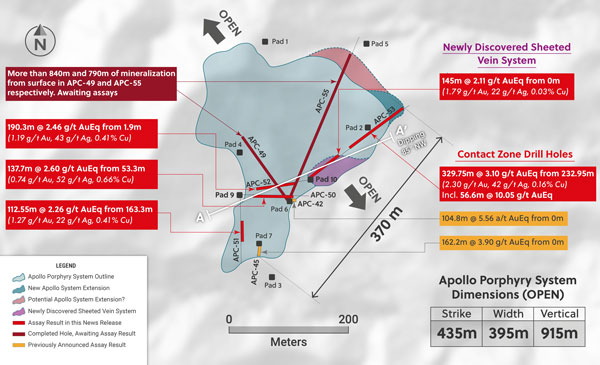
Figure 2: Cross Section Highlighting APC-53 and the Newly Discovered Sheeted Vein System and High-Grade Contact Zone
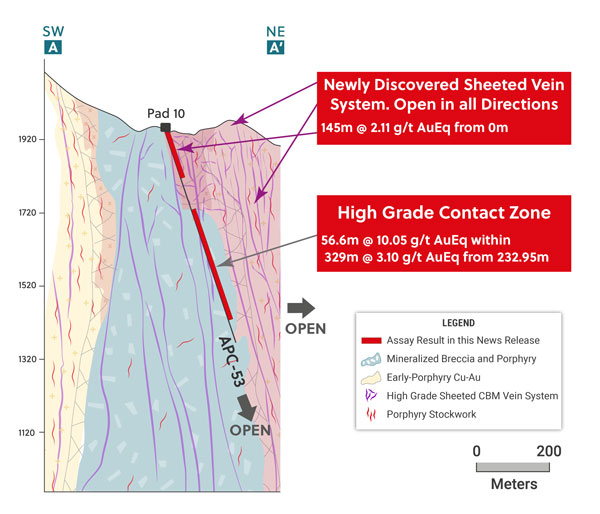
Figure 3: Core Tray Highlighting the New Sheeted Vein System Discovered in APC-53
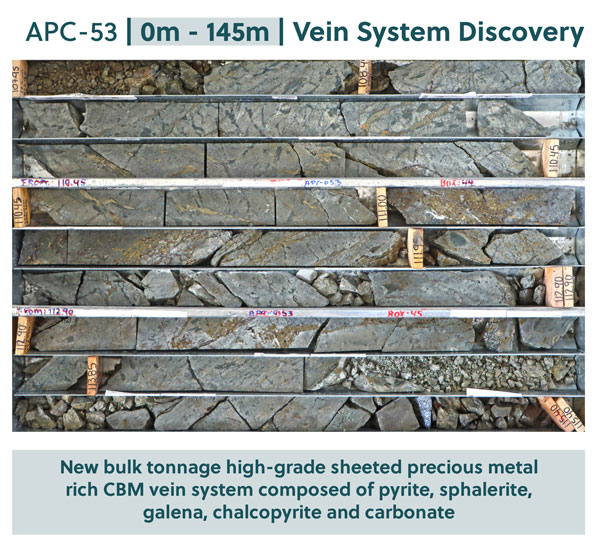
Figure 4: Core Photos of Mineralization from the High-Grade Contact Zone in APC-53
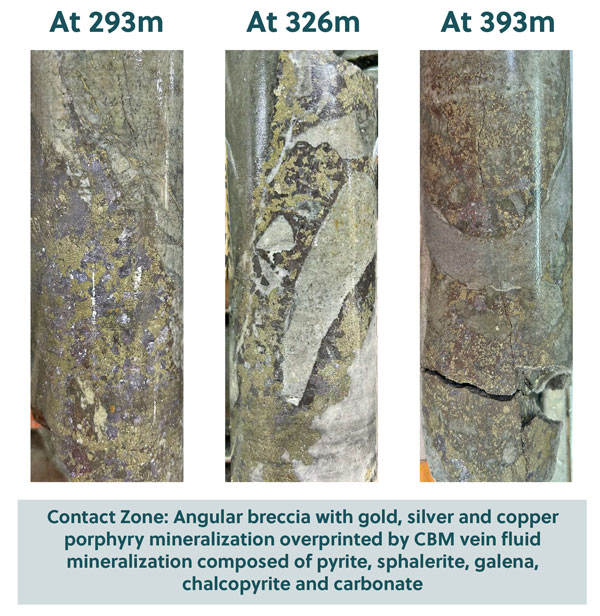
Figure 5: Plan View of the Guayabales Project Highlighting the Apollo Target Area
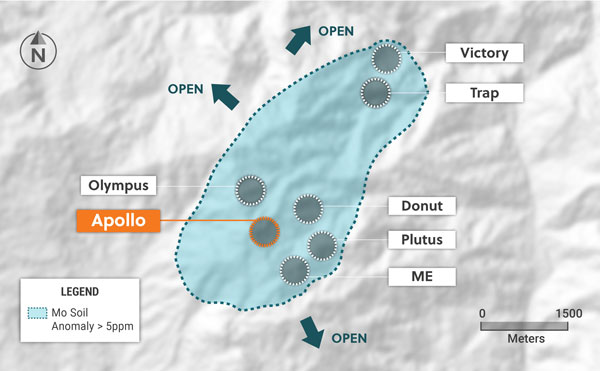
About Collective Mining Ltd.
To see our latest corporate presentation and related information, please visit www.collectivemining.com
Founded by the team that developed and sold Continental Gold Inc. to Zijin Mining for approximately $2 billion in enterprise value, Collective Mining is a copper, silver, and gold exploration company with projects in Caldas, Colombia. The Company has options to acquire 100% interests in two projects located directly within an established mining camp with ten fully permitted and operating mines.
The Company’s flagship project, Guayabales, is anchored by the Apollo target, which hosts the large-scale, bulk-tonnage and high-grade copper-silver-gold Apollo porphyry system. The Company’s near-term objective is to drill the shallow portion of the porphyry system while continuing to expand the overall dimensions of the system and test new targets on the property.
Management, insiders and close family and friends own nearly 45% of the outstanding shares of the Company and as a result, are fully aligned with shareholders. The Company is listed on the TSXV under the trading symbol "CNL" and on the OTCQX under the trading symbol “CNLMF”.
Qualified Person (QP) and NI43-101 Disclosure
David J Reading is the designated Qualified Person for this news release within the meaning of National Instrument 43-101 (“NI 43-101”) and has reviewed and verified that the technical information contained herein is accurate and approves of the written disclosure of same. Mr. Reading has an MSc in Economic Geology and is a Fellow of the Institute of Materials, Minerals and Mining and of the Society of Economic Geology (SEG).
Technical Information
Rock, soils, and core samples have been prepared and analyzed at SGS laboratory facilities in Medellin, Colombia and Lima, Peru. Blanks, duplicates, and certified reference standards are inserted into the sample stream to monitor laboratory performance. Crush rejects and pulps are kept and stored in a secured storage facility for future assay verification. No capping has been applied to sample composites. The Company utilizes a rigorous, industry-standard QA/QC program.
Information Contact:
Follow Executive Chairman Ari Sussman (@Ariski73) and Collective Mining (@CollectiveMini1) on Twitter
Investors and Media
Paul Begin, Chief Financial Officer
[email protected]
+1 (416) 451-2727
FORWARD-LOOKING STATEMENTS
This news release contains certain forward-looking statements, including, but not limited to, statements about the drill programs, including timing of results, and Collective’s future and intentions. Wherever possible, words such as “may”, “will”, “should”, “could”, “expect”, “plan”, “intend”, “anticipate”, “believe”, “estimate”, “predict” or “potential” or the negative or other variations of these words, or similar words or phrases, have been used to identify these forward-looking statements. These statements reflect management’s current beliefs and are based on information currently available to management as at the date hereof.
Forward-looking statements involve significant risk, uncertainties, and assumptions. Many factors could cause actual results, performance, or achievements to differ materially from the results discussed or implied in the forward-looking statements. These factors should be considered carefully, and readers should not place undue reliance on the forward-looking statements. Although the forward-looking statements contained in this news release are based upon what management believes to be reasonable assumptions, Collective cannot assure readers that actual results will be consistent with these forward-looking statements. These forward-looking statements are made as of the date of this news release, and Collective assumes no obligation to update or revise them to reflect new events or circumstances, except as required by law.
Neither TSXV nor its Regulation Services Provider (as that term is defined in the policies of the TSXV) accepts responsibility for the adequacy or accuracy of this news release.




